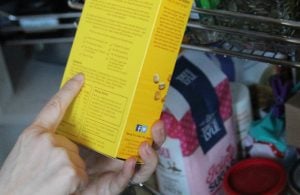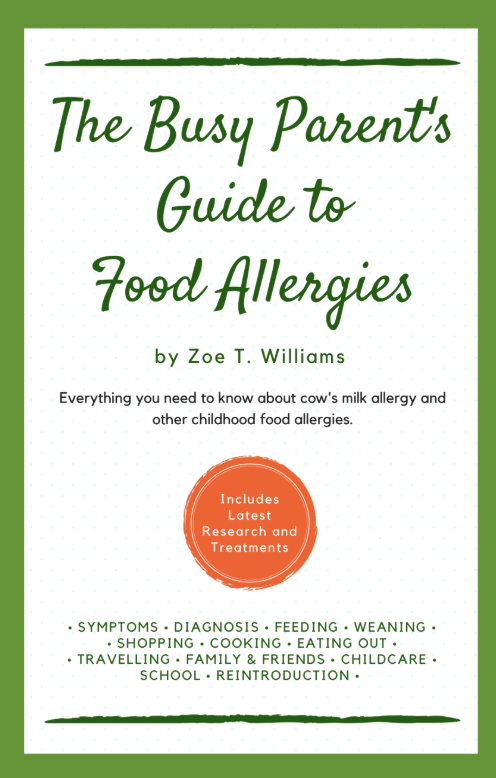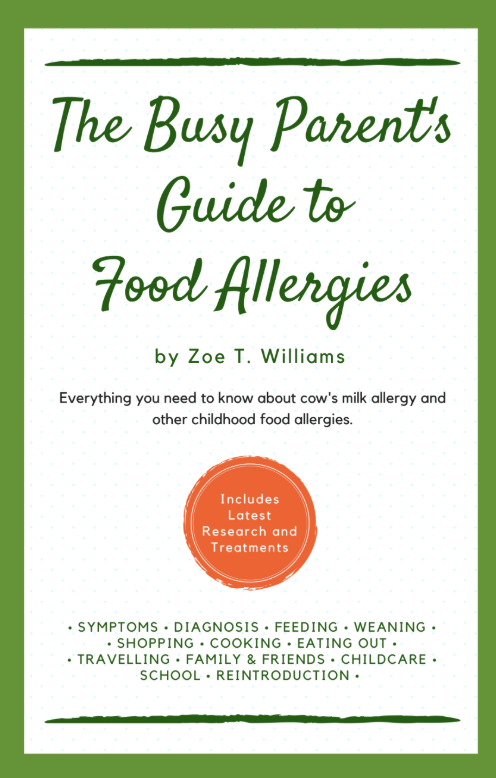 Food labelling is a hot topic, so today we’re publishing an extract from the first book of our food blogging partner Zoe Williams over at The Allergy Kitchen. Here we share an extract from Zoe’s book, entitled The Busy Parent’s Guide to Food Allergies:
Food labelling is a hot topic, so today we’re publishing an extract from the first book of our food blogging partner Zoe Williams over at The Allergy Kitchen. Here we share an extract from Zoe’s book, entitled The Busy Parent’s Guide to Food Allergies:
Food Labelling
According to EU law, food allergens have to be labelled in a clear and consistent way whenever they are used as in ingredient in pre-packaged foods. This law came into effect in December 2014 and makes it much easier to make safe food choices. These regulations are set to stay in place after Brexit.
These regulations do not apply to food that is prepared and packed on site, such as independent or in-store bakeries, delicatessens, butchers, fishmongers etc. It also doesn’t apply to pre-packed sandwiches, salad etc in cafés, if they are prepared on the premises. The seller must still have the information available if you ask for it, but it doesn’t have to be printed on the packaging. This is designed to help small businesses, but also applies to larger companies.
There are 14 allergens which must be emphasised on the label. These are:
- eggs
- milk
- fish
- crustaceans (e.g. crab, lobster, crayfish, shrimp, prawn)
- molluscs (e.g. mussels, oysters, squid)
- peanuts
- tree nuts (namely almonds, hazelnuts, walnuts, cashews, pecans, brazils, pistachios, macadamia nuts or Queensland nuts)
- sesame seeds
- cereals containing gluten (namely wheat (such as spelt, Khorasan wheat/Kamut), rye, barley, oats, or their hybridised strains).
- soya
- celery and celeriac
- mustard
- lupin
- sulphur dioxide and sulphites (at concentration of more than ten parts per million)
Where these foods are used as an ingredient in a pre-packaged food, they may be written in bold, italics, CAPITALS, highlighted or underlined, to make them stand out. This information must all be in one place. Manufacturers are no longer allowed to put this type of allergen information in a separate box, which means you only need to look at the ingredients section on the packaging. Here are some examples:
|
Manufacturers are still allowed to put additional, voluntary information separately. For example, if the food is produced in a factory that uses any of the top 14 allergens as ingredients in other foods, there is a small risk that tiny amounts of the allergens could get into the food. This is known as cross-contact or cross-contamination. These types of foods are often referred to as ‘may contains’.
Unfortunately this type of information is not regulated and so it can be inconsistent between different brands. It is often used as a blanket statement to protect the manufacturer from legal liability. If in doubt, contact the manufacturer directly to ask for more information. You might see a note like one of these:
|
When you are starting out, go shopping by yourself. The first time you go shopping it will take you a lot longer as you will need to read every food label thoroughly. This is much more stressful if you also have a small person getting bored and demanding your attention.When you are food shopping, allow extra time to read these labels. Check labels of everything you buy, every time, even if your child has eaten it safely before. Manufacturers change their recipes from time to time, and they don’t always mark this on the front of the packaging.

Some great apps are available to help when food shopping, such as Libereat. You can set up a profile with your child’s allergies. As you shop, scan product barcodes with your phone and the app will tell you if they are safe or not.
UPDATE: In August 2022, LiberEat transitioned from a consumer-facing app to a B2B SaaS provider, focusing on advanced allergen error detection technology for enhanced food safety.
Online shopping is brilliant. You can often get a much bigger range of products than you can find in your local supermarket. You can also take your time reading ingredients, and choose when you want to do it – perhaps when your little one is asleep so you can concentrate. Most online supermarkets will allow you to build up a list of ‘favourites’ so that you can just shop from products that you know are safe.
Getting to grips with a food allergy can feel overwhelming at first. Give yourself extra time for food shopping in the first few weeks. Experiment with new foods and find out what your child likes and dislikes. Soon you will find new regular items and favourites and you won’t need to give it as much thought. There are new products coming onto the market all the time and the choice is better than ever for people with food allergies.
KEY POINTS
- Always check ingredients carefully when buying food.
- Common allergens must be highlighted in ingredients labels on pre-packed food.
- Food prepared on-site doesn’t have to be labelled – you will have to ask for information.

LiberEat’s content is not intended to be a substitute for professional medical advice. You should always take precautions and use appropriate judgement to protect yourself and others under your care with regard to food allergies.
Food allergen rules and regulations continue to change and evolve. Food businesses in production, hospitality, catering, and retail must be vigilant when working with ingredients, products, and dishes containing allergens and exercise due diligence when providing ingredient and allergen information to consumers. Successful allergen management is a big part of food safety professionals’ creating a culture of care and excellence within their teams.
LiberEat offers a second line of defence for food businesses by detecting errors, allergens, and other harmful ingredients with our proprietary Allergen Error Detection Technology. Food businesses can apply this technology directly to identify errors in allergen communications, preventing the risk of injury to consumers 24/7, 365 days of the year so that errors are detected, diagnosed and rectified quickly. We know this helps you protect your brand reputation and enhance customer trust in your brand.
Contact us today to learn more about how we can support your existing food safety processes.

